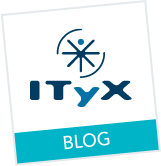Organizations have been able to work more efficiently thanks to the creation and adoption of smartphone technology. A workforce using smartphones can manage their time more effectively with the use of tools such as email, collaboration and calendar on smartphone devices. However, organizations have not tapped into the full potential of smartphones. Some organizations have encountered difficulties as they add more smartphone base applications. Getting smartphone applications right could unlock great potential.
“The unprecedented growth in the digital economy which is currently valued at $20 trillion which represents 14% of the global aggregate Gross Domestic Product,” says Andrew Perry of Top Image Systems. He commented further, saying that “in this environment, information is the currency of exchange. In that context, the challenge for organizations is being able to harness that information and turn it into a competitive advantage.” Customers and employees present an additional challenge to organizations as both groups are using their smartphones in increasingly innovative ways, sometimes more so than the companies that produce and sell the technology. Perry says that, compared to pre-smartphone consumers, current clients and customers are “much more educated, much more savvy today and they have access to a lot of information, and they are able to make their own decisions about how they are going to deal with, and also be able to share information with their colleagues and their friends to social media.”
Organizations that want a competitive advantage must seek to exceed, or at least match, their consumers’ technological proficiency. In addition, organizations need to use their pre-existing tools to their full capacity. In the midst of all these challenges, it would be easy to throw in the towel, but that could lead to even more challenges. Instead, consider these five points on efficient organizational data collection using mobile devices:
Understanding Capture
Document capture requires managing the data so that it is safe and can be accessed by the intended people or process. Image capturing, especially those images that are not based on text, can be challenging to deal with unless an intelligent policy for data capturing is put in place. Metadata is an important, but an often ignored aspect of image capturing, as it data provides important information. The metadata should be accessible along with the associated image. Document naming is another important aspect of non-text image management. It is important to change the file name as the file is saved to avoid default naming which can make tracking difficult.
Safe and Sound
Knowing where the data is stored is essential with regard to how it is cataloged and accessed. It is important to save data where it needs to be saved, automatically. This saves time and effort in the long run as it eliminates the need to move data from laptops, tablets and desktop computers to a central location where all the relevant employees and processes can access the information.
Really Safe and Really Sound
Data can provide a competitive advantage for any business that invests correctly in protection and security. The more data a business has, the greater the risk of a security breach. This has become an area to keep an eye on, especially given the recent breaches at Target, Ashley Madison and iCloud.
Clear as Glass
For both internal and external reasons, transparency is a vital part of how any kind of data is saved. The best practices that apply to other types of data should apply to image capture as well- for example, log files to track access and usage. Ideally, you should be able to find out when and where data was captured and accessed, and by whom.
Use it or Lose it
Image capture needs to be a meaningful part of how an organization operates, otherwise it might be negatively viewed by employees or create an inaccessible or unused silo of data. It's simply not enough to capture data and make it available and searchable. A better approach is to make it part of an automated process. That way data is immediately available and the metadata can be used to guide a downstream process.
In addition to the guidelines above, there are tools allow mobile data capture to easily integrate into any business environment such as the Omnichannel Capture Platform from ITyX, which allows you to easily bring documents into critical business processes.
Photo: (c)iStockphoto/PeskyMonkey



